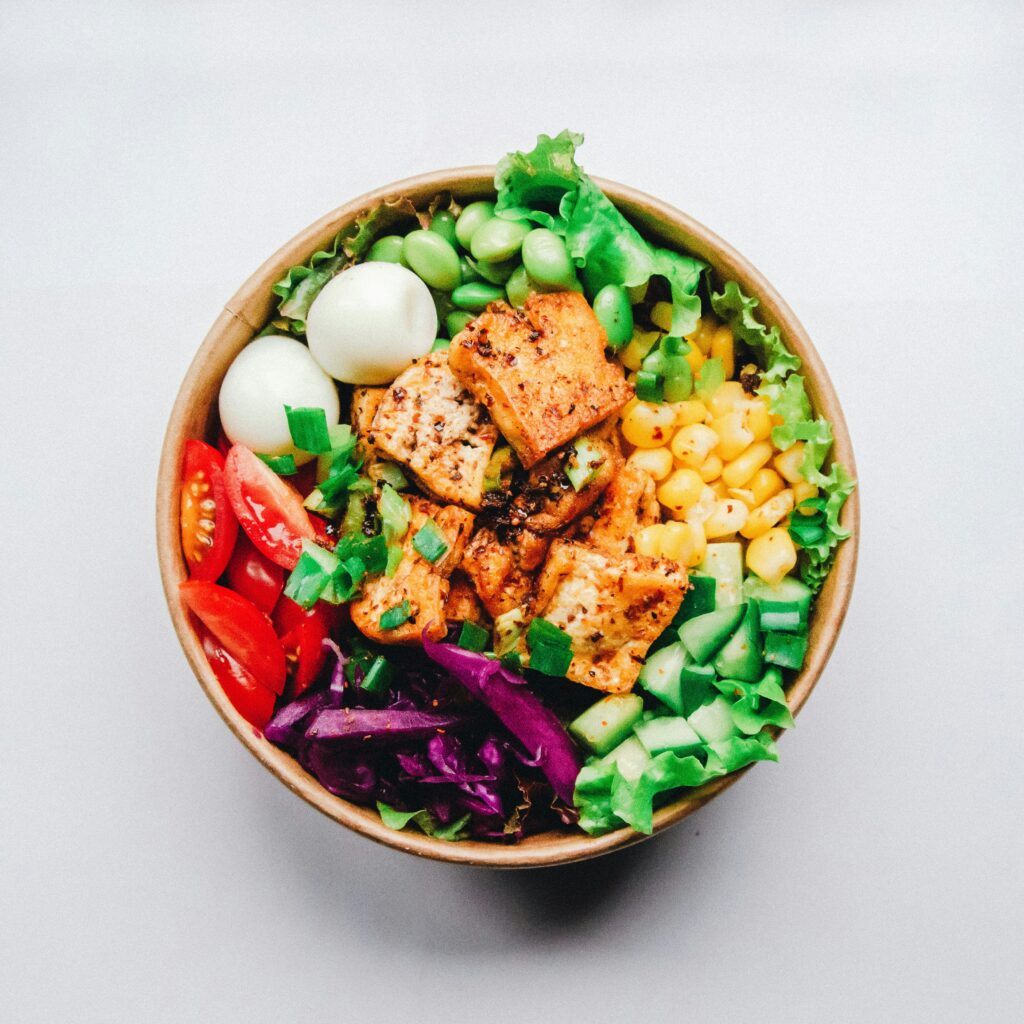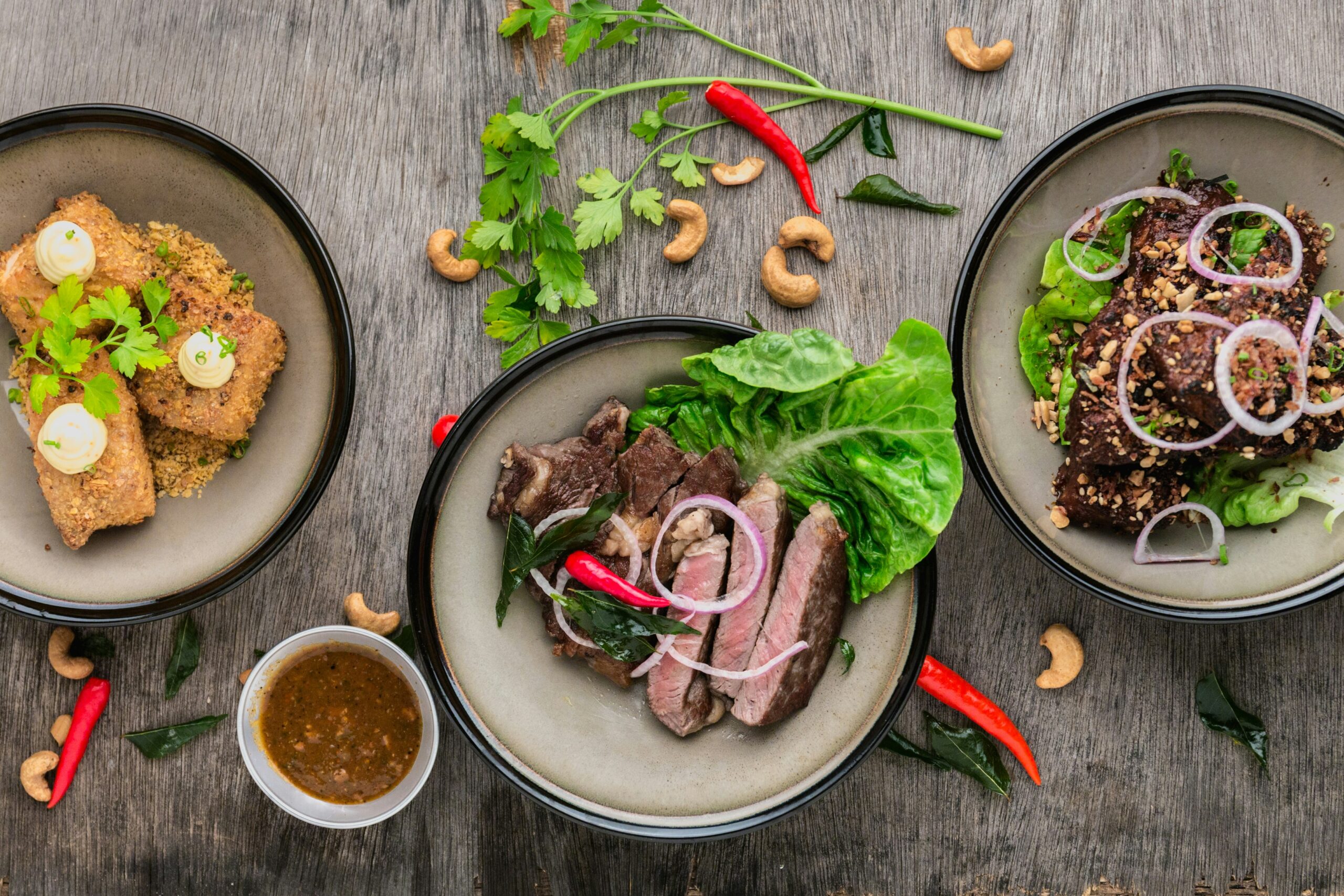Some of the links in this post are affiliate links, which means I may earn a small commission if you choose to make a purchase—at no extra cost to you. I only share products I personally use, love, or truly believe in.
Feeling Confused by Nutrition Advice? You’re Not Alone.
“Protein is good for you but stay away from fats. Be careful of carbs! Those are dangerous. Well, wait. Maybe some fats are okay.”
Sound familiar?
If you’re like me, the endless nutrition trends, fad diets, and contradicting health advice make it easy to feel overwhelmed. But here’s the truth: eating well doesn’t have to be complicated. In fact, nutrition that truly supports your body is grounded in real, whole foods, not stress.
More than that, healthy eating means listening to your body instead of trying to follow every new diet or influencer you come across online. Let’s cancel out the noise and get back to basics—with nutrition principles that actually work and are easy to remember.
Focus on Whole Foods (Not Numbers or Macros)
Forget calorie counting and macro tracking—the foundation of healthy eating is real, whole food. Research shows that minimally processed diets are associated with better long-term health outcomes, including lower risk for obesity and diabetes (Srour, et al., 2020).
What Are Whole Foods?
- Vegetables & Fruits – Packed with vitamins, minerals, antioxidants, and fiber.
- Quality Proteins – Grass-fed meat, pasture-raised eggs, wild-caught fish, legumes, tofu.
- Unprocessed Carbs – Sweet potatoes, quinoa, oats, beans, whole grains.
- Healthy Fats – Avocados, olive oil, nuts, seeds, coconut, fatty fish.
💡 Try This: Instead of overthinking nutrients, focus on eating a variety of colorful foods with the shortest ingredient list—ideally just one ingredient.

Balance Your Plate for Energy & Digestion
Ever feel tired or hungry just an hour after eating? The key to long-lasting energy and satiety is balancing your plate. High-protein meals have been shown to increase fullness and reduce snacking (Polivy & Herman, 2005).
The Balanced Plate Formula:
- Protein & Veggies (1/2 of your plate) – Supports muscle repair, blood sugar balance, and provides essential micronutrients.
- Healthy Fats (1/4 of your plate) – Helps regulate hormones and supports brain health.
- Fiber-Rich Carbs (1/4 of your plate) – Offers steady energy and supports digestion.
Example of a Balanced Meal:
- Grilled salmon (protein & fat)
- Roasted sweet potatoes (carb)
- Steamed broccoli & greens (fiber & micronutrients)
🛒 Sometimes getting our greens in daily is hard. That’s why I recommend these to ensure I get quality greens on days I’m running low.
💡 Try This: Build your meals using this simple formula instead of obsessing over portions or calories. It works every time!
If you’re trying to create a calorie deficit for fat loss, prioritize protein over carbs. Protein is more satiating and has a higher thermic effect, meaning your body uses more energy to digest it (Bourn & Prescott, 2002).
Stop Overcomplicating Carbs, Fats & Protein
The wellness world loves to villainize entire food groups, but your body needs all three macronutrients to function optimally. Let’s keep it real and break it down:
Carbs: Friend or Foe?
- Why You Need Them: Primary energy source for your brain and muscles.
- Best Choices: Whole grains, starchy vegetables, legumes, fruits.
- Limit: Refined carbs (white bread, sugary cereals, processed snacks).
Fat: The Comeback Nutrient
- Why You Need It: Supports hormone production, brain function, and vitamin absorption.
- Best Choices: Avocados, olive oil, coconut, nuts, seeds, wild-caught fish.
- Limit: Processed vegetable oils like soybean and corn oil.
Protein: The Satiety Hero
- Why You Need It: Builds and maintains muscle, regulates metabolism, and keeps you full.
- Best Choices: Grass-fed beef, organic chicken, lentils, beans, eggs.
- Limit: Processed meats like hot dogs or deli meats high in additives.
💡 Try This: Instead of cutting carbs or fearing fats, aim to upgrade your sources. Search for real foods that are not ultra-processed or ultra-packaged.

Hydration Is More Important Than You Think
Mild dehydration is more common than you think and can trigger fatigue, headaches, and even increased hunger. Hydration plays a key role in digestion, energy, and cognitive function. Sometimes we mistake thirst for hunger! Try drinking some water before eating if you’re feeling hungry.
How Much Water Do You Need?
👉 At least half your body weight in ounces per day. (If you weigh 150 lbs., aim for 75 oz.)
Signs You Need More Water:
- Fatigue or brain fog
- Dry skin or lips
- Headaches
- Sugar cravings
💡 Try This: Start your day with a full glass of water before coffee. Add lemon juice for extra electrolytes!

Step 5: Eat Mindfully (and Actually Enjoy Your Food)
Eating mindfully helps regulate digestion, improves satiety, and encourages a healthier relationship with food. Studies show that mindful eating practices can reduce overeating and improve well-being (Polivy & Herman, 2005).
Mindful Eating Habits:
- Slow down—chew thoroughly and savor your meals.
- Ditch distractions—turn off the TV or phone while eating.
- Eat with others—conversation naturally slows your pace.
💡 Try This: Put your fork down between bites to help you check in with your body and appetite.

Join readers getting weekly holistic tips, recipes, and freebies today!
Step 6: Simplify Grocery Shopping & Meal Prep
Stocking your kitchen with healthy basics makes it easier to make nourishing choices. Don’t overcomplicate meal prep—keep it simple!
Grocery Shopping Tips:
- Stick to the perimeter—most whole foods are found there.
- Read labels—look for real ingredients you recognize.
- Plan 3–5 simple meals—rotate proteins, veggies, and sides.
💡 Try This: Replace processed snacks with whole-food swaps like:
- Trail mix with nuts and dried fruit
- Greek yogurt with berries
- Hard-boiled eggs and hummus
To avoid going into “hanger mode,” eat once your stomach growls but before you’re ravenous—it helps prevent impulsive food choices.
Winding Down: Nutrition Doesn’t Have to Be Hard
Let’s cut through the noise: healthy eating isn’t about perfection or chasing trends. It’s about consistency, simplicity, and tuning in to what your body truly needs.
Build your meals around protein, veggies, and healthy fats. Choose whole foods more often than processed ones. Hydrate and eat mindfully. Don’t stress the rest.
Sustainable nutrition isn’t just doable, it’s enjoyable.
👉 Related Post: Here’s why sustainable habits are important!
💬 What’s one simple nutrition tip that works for you? Drop a comment below—I’d love to hear it!
1 Corinthians 10:31,
Kirsten
References
Bourn, D., & Prescott, J. (2002). A comparison of the nutritional value, sensory qualities, and food safety of organically and conventionally produced foods. Critical Reviews in Food Science and Nutrition, 42(1), 1-34.
Polivy, J., & Herman, C. P. (2005). Dieting and binge eating: A causal analysis. American Psychologist, 40(2), 193-201.
Srour, B., Fezeu, L. K., Kesse-Guyot, E., Allès, B., Debras, C., Druesne-Pecollo, N., … & Touvier, M. (2020). Ultra-processed food intake and risk of type 2 diabetes. JAMA Internal Medicine, 180(2), 283-291.


Leave a Reply